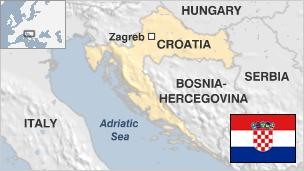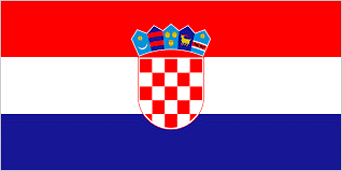Overview
Croatia is blessed with natural beauty, with a spectacular Adriatic coastline and seaside, located in South-Eastern Europe; sharing a maritime border with Italy, and bordering on Slovenia to the northwest, Hungary to the northeast, Serbia to the east, Bosnia and Herzegovina, and Montenegro to the southeast. Croatia covers an area of 56,594 square kilometres and has a population of about 4.1 million inhabitants; most of whom speak and communicate in Croatian, which is part of the Southern-Slavic language groups.
Croatia’s became independent in 1991 and applied for EU membership, becoming the 2nd former Yugoslav republic to do so. Croatia became the 28th member state of the EU in 2013.
Socio-Economic Profile
 Croatia is considered a developing high-income service based economy, with the tertiary sector being responsible for about 60% of total GDP. In recent times the Croatian economy has become one of the strongest economies in South-Eastern Europe.
Croatia is considered a developing high-income service based economy, with the tertiary sector being responsible for about 60% of total GDP. In recent times the Croatian economy has become one of the strongest economies in South-Eastern Europe.
Industry and Manufacturing make up about 26.2% of GDP, while the Services sector equates to 70.1% of the country’s GDP; while Agriculture accounts for 3.7% of the GDP.
Economists forecast economic growth of 2.5% during 2020, and 2.3% in 2021.
Trade plays a major role in Croatian economic output with industrial sector exports annually over €10 billion worth of goods including shipbuilding which accounts for over 10% of exported goods. Food processing and chemical industry also account for significant portions of industrial output and exports.
The country’s Agriculture – products are:
Crops such as wheat, corn, barley, sugar beet, sunflower, rapeseed, etc; vegetables include potatoes, cabbage, onion, tomato, and pepper; fruits range from apples, plum, mandarins, olives, and grapes for wine; livestock farming including cattle, cows and pigs; and dairy industry related products.
The country’s Industrial – products are: Shipbuilding, machine tools, fabricated metal, chemicals and plastics, electronics, various iron and rolled steel products, aluminum, paper, wood products, construction materials, textiles, petroleum and petroleum refining, food and beverages, tourism and hospitality products.
Croatia’s sovereign credit ratings are as follows: Standard & Poor’s credit rating is at BBB-with stable outlook. Moody’s credit rating is at Ba2 with positive outlook, and Fitch’s credit rating is presently at BBB- with positive outlook.
Croatia is ranked among the top 20 most popular tourist destinations in the world with over 14 million visitors annually. Tourism is one of the main pillars of the Croatian economy, comprising 19.6% of Croatia’s GDP, and as such Tourism has become a sizeable source of income to the country, generating a tourism related revenue of over €8 billion.
Brief Socio-Economic Profile – 2019
 Population: 4,1 million
Population: 4,1 million
GDP (PPP): $101.3 billion
GDP Growth: 2.8%
GDP 5-yearcompound annual growth: 1.5%
GDP per capita: $24.424
Unemployment Rate: 11.2%
Inflation Rate (CPI): 1.1%
Foreign Direct Investment (FDI) Inflow: $2.1 billion
Croatia is ranked 38th among 44 countries in the Europe region.


